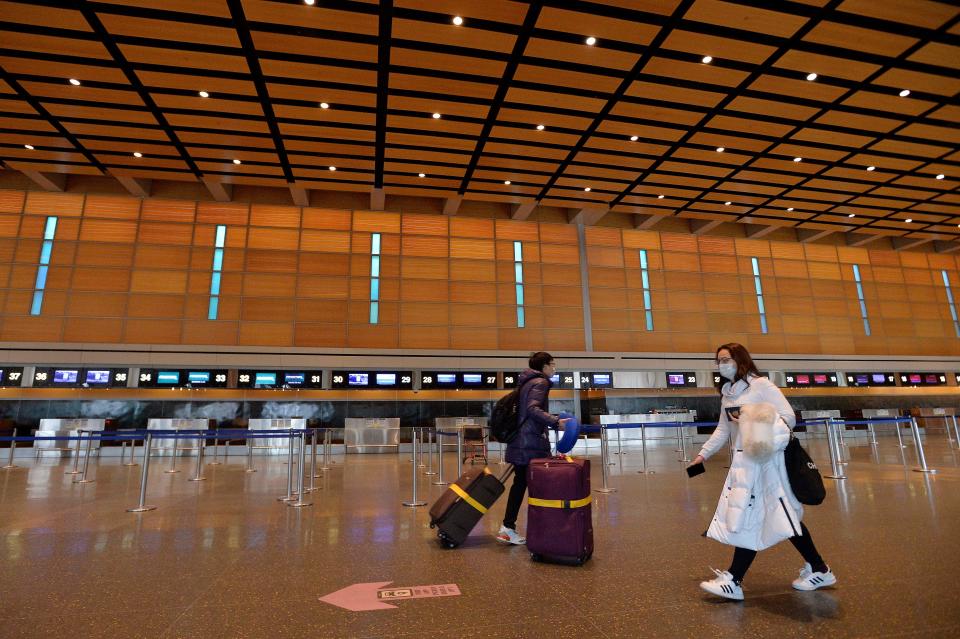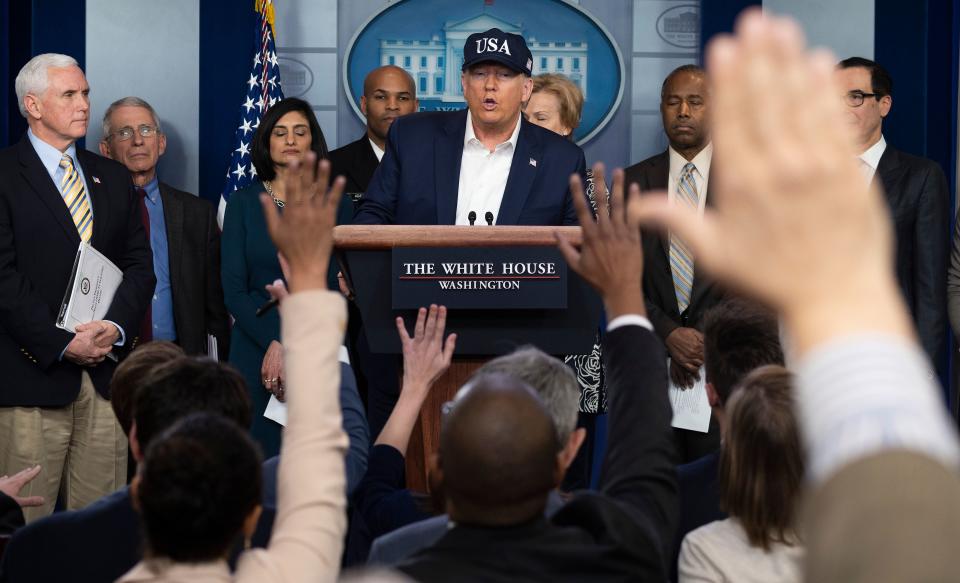What Trump's new coronavirus travel restrictions mean for Americans abroad
Americans returning to the U.S. after visiting certain foreign countries — including most of Europe — will be required to fly into one of 13 designated airports equipped to perform medical screening for coronavirus infection, according to senior officials from the Department of Homeland Security (DHS) who briefed reporters on background about the latest travel restrictions meant to control the spread of the COVID-19 pandemic.
Starting Saturday, most foreign nationals who’ve visited China, Iran or one of the 26 countries in Europe’s Schengen Area — where citizens can travel freely across national borders — within the past 14 days are barred from entering the United States. These travel restrictions will soon be expanded to include the United Kingdom and Ireland, which were exempted from the original order announced by President Trump three days ago.
United States citizens and legal permanent residents who’ve visited one of the restricted countries within 14 days will be rerouted by their airlines, at no additional expense, to one of the 13 designated airports.
And all of them will be subject to a 14-day quarantine in the U.S. — at home under self-quarantine in most cases, or in a guarded facility for those considered at highest risk of spreading the virus.

The regulation includes travelers whose U.S.-bound flight segment originates somewhere else.
“If you’re flying from Africa but you were in Europe last week, you still have to come through one of those 13 airports,” a senior DHS official explained.
The 13 airports are:
Boston Logan International Airport (BOS), Massachusetts
Chicago O’Hare International Airport (ORD), Illinois
Dallas/Fort Worth International Airport (DFW), Texas
Detroit Metropolitan Airport (DTW), Michigan
Daniel K. Inouye International Airport (HNL), Hawaii
Hartsfield-Jackson Atlanta International Airport (ATL), Georgia
John F. Kennedy International Airport (JFK), New York
Los Angeles International Airport, (LAX), California
Miami International Airport (MIA), Florida
Newark Liberty International Airport (EWR), New Jersey
San Francisco International Airport (SFO), California
Seattle-Tacoma International Airport (SEA), Washington
Washington Dulles International Airport (IAD), Virginia
Upon arrival at one of the designated airports, travelers will proceed through regular customs clearance and then on to “enhanced entry screening,” where DHS-contracted medical personnel will question returning travelers about their medical history and health status. Randomly selected passengers and anyone whose history suggests possible coronavirus exposure will undergo temperature screening. Travelers who exhibit potential signs of the coronavirus or other “red flags” will then be referred to medical personnel from the Centers for Disease Control and Prevention stationed at the airports for a “more in-depth medical review,” the official said, and anyone deemed to be possibly infected will be quarantined at or near the airport according to local health ordinances.
Everyone else covered by the new restrictions will be provided with information on the coronavirus and instructed to self-quarantine at home for 14 days. The DHS officials said that personal information collected from each traveler during the secondary screening process, including their name, contact information and address of final destination, will be passed along to local health officials who will monitor their self-quarantine regimens.

DHS officials noted that such procedures have already been in place at 11 of the 13 designated airports since the beginning of February, when Trump announced the first set of coronavirus-related restrictions on travel from mainland China. In late February, those restrictions were expanded to include Iran. A senior DHS official said that since Feb. 2, only 17 people who’ve returned to the U.S. after traveling to China or Iran have been placed in guarded quarantine facilities. Over 30,000 people, however, have been asked to self-quarantine at home, a number that is expected to grow as the new restrictions on travel from European countries goes into effect.
The latest round of travel restrictions have caused some confusion since they were first announced by Trump during a televised address from the Oval Office on Wednesday evening. Contrary to Trump’s statement that he was ordering a 30-day suspension on all travel, including cargo, to the U.S. from Europe, except the United Kingdom, acting Homeland Security Secretary Chad Wolf released a statement clarifying that the restrictions would would apply only to foreign nationals who’d recently visited the 26 countries in Europe’s Schengen Area.
During Saturday’s press briefing, the senior DHS official emphasized that the ban on entry to the U.S. does not apply to U.S. citizens, legal permanent residents and their family members under age 21, as well as foreign diplomats and others on official government travel, although they will have to fly into designated airports and be screened. Cargo flights are not covered by the restrictions.
On Friday, Tedros Adhanom Ghebreyesus, the director-general of the World Health Organization, stated that “Europe has now become the epicenter of the pandemic, with more reported cases and deaths than the rest of the world combined, apart from China.”
While Trump has repeatedly touted his early decision to halt travel to the U.S. from China as a success, the U.S. has seen the coronavirus spread across the country in recent weeks, prompting Trump to declare a national emergency on Friday as nationwide cases surpassed 2,000.
During a press briefing at the White House on Saturday, Trump suggested that he was considering restricting domestic travel for parts of the United States that have been most heavily affected by the epidemic, though no specifics were provided. A few hours later, a senior DHS official told reporters that there is “no expectation of any domestic travel restrictions at this time.”
_____
Read more from Yahoo News:



